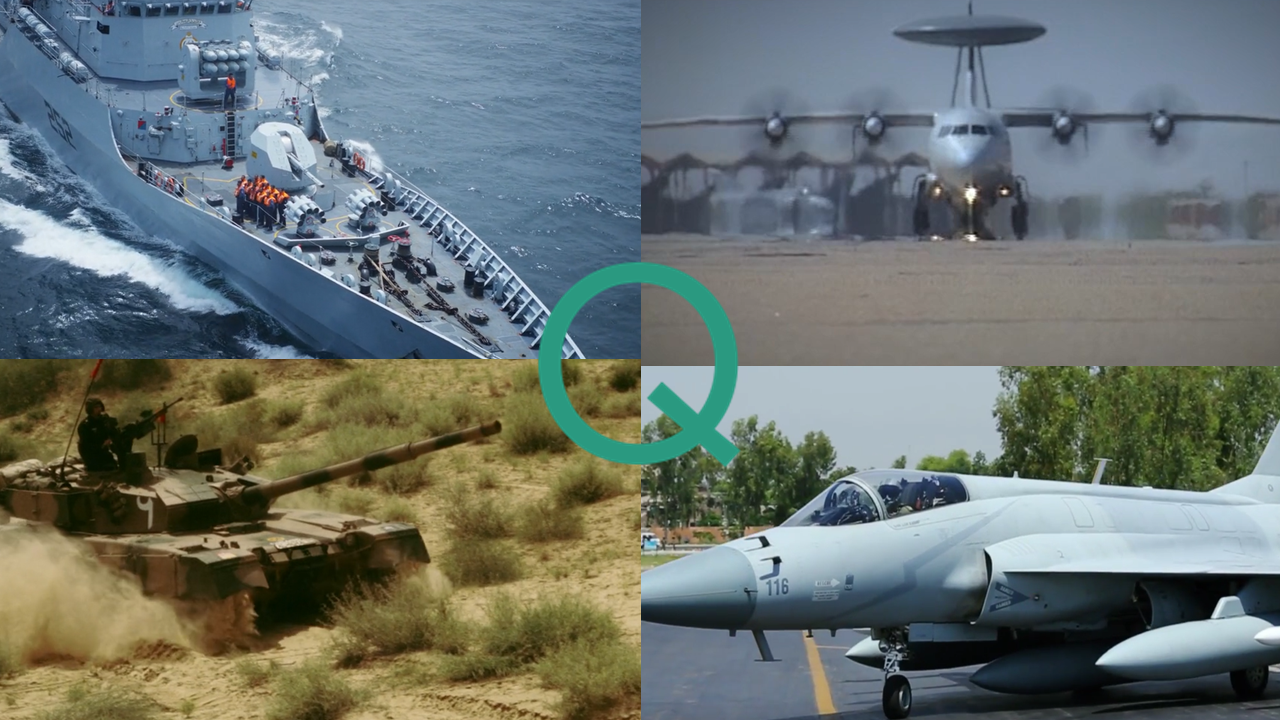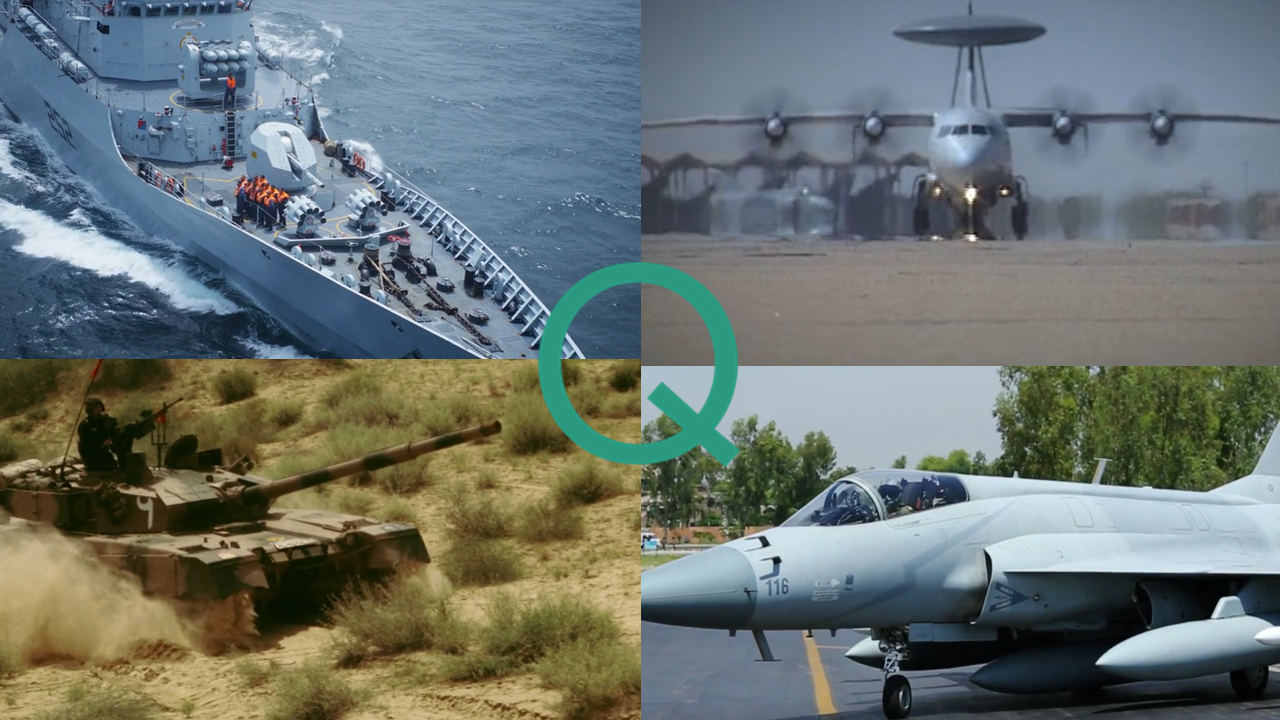3039Views 0Comments

This Week in Defence News
22 January 2016
Every Friday, Quwa offers coverage and short-form analysis of various news topics. It can be a challenge to offer in-depth reporting of every interesting piece of news, so we invite you our readers to engage and share with us your knowledge and insights on the various issues of the week.
We also invite our readers to suggest topics by Facebook or Twitter
Pakistan tests Ra’ad air-launched cruise missile
The Pakistan Air Force (PAF) conducted a test of the Hatf (Vengeance)-VIII Ra’ad air-launched cruise missile (ALCM). The second of Pakistan’s land-attack cruise missile (LACM) designs, the Ra’ad has a range of 350km and is capable of carrying conventional and nuclear warheads (IHS Jane’s 360).
Revealed to the world in 2007 (via its first publicly disclosed test) the Ra’ad was developed by Air Weapons Complex and National Engineering and Scientific Commission. At present the Mirage ROSE is the only fully verifiable platform carrying the Ra’ad ALCM, but the JF-17 is slotted for integration.
The Ra’ad ALCM is a low-observable (aka “stealthy”) design meant to be difficult to detect on radar (at least in comparison to combat aircraft). It is powered by a micro-turbojet (or micro-turbofan, it has not been confirmed either way) engine. This gives it the ability to fly at sub-sonic speed.
While the guidance systems on-board the Ra’ad have not been confirmed, Inter Services Public Relations (ISPR) noted earlier that the Babur (the other Pakistani LACM) is equipped with TERCOM and DSMAC, which enable the cruise missiles to fly low and strike their targets with high accuracy, respectively. It is likely that Ra’ad is (or at least could be) equipped with the same technology.
There may also be room for future development. In 2008 Pakistan signed an agreement with Turkey to collaborate on turbojet, radar cross-section reduction and precision-guided bomblet technology.[1] Progress in each of these areas could enable Pakistan to develop variants of the Ra’ad ALCM with more range and/or the capacity to deploy sub-munition warheads.
Other areas worth exploring could be Ra’ad ALCMs tipped with anti-radiation seekers, which could make it an asset in SEAD [Suppression of Enemy Air Defence] operations, or imaging infrared (IIR) or active radar seekers for use in anti-ship missions.
Pakistan’s Defence Minister confident over purchase of new F-16s
Pakistan’s Defence Minister, Khawaja Asif, told the National Assembly that despite ongoing hurdles in Congress, the U.S. was “committed” to delivering eight new F-16s (Dawn News).
Asif also offered a little detail into the possible timetable for delivery, noting that the aircraft would be delivered within two years of a contract being signed. Despite the hurdles raised in Congress, it seems the White House is committed to seeing the sale come to fruition.
For background, it is worth remembering that the Pakistan Air Force (PAF) intended to raise its F-16 fleet to around 110 in the late 1980s, before the Pressler Amendment was levelled against Pakistan over its nuclear program. At present the PAF’s F-16 fleet sits at around 76 fighters. It will be worth seeing if this order for eight planes is part of a bigger request, or if it is a prelude to a string of incremental purchases.
Indonesia on-track to deliver Strategic Sealift Vessel (SSV) to the Philippines
PT PAL Indonesia, a state-owned shipbuilder, is on-track to deliver the first of two Strategic Sealift Vessels (SSV) to the Philippine Navy. The $92 million U.S. order for two (of possibly a total of four) ships in 2014 was the first naval export order for the Indonesian shipbuilding industry.
The SSV is a landing platform dock (LPD) designed by South Korea’s Daesun Shipbuilding and Engineering for use by the Indonesian Navy (where it is known as the Makassar-class).
Designed for amphibious operations, the Makassar-class LPD has a full load displacement of just over 11,500 tons. According to IHS Jane’s 360, the Makassar-class LPD can be manned by a crew of 126 as well as carry 500 troops and three large helicopters.
The Makassar-class is a sound example of the recent progress Indonesia has made in not only developing its shipbuilding industry, but also modernizing its navy. The SSV launched alongside the PKR-1, the first of two SIGMA 10514 multi-mission frigates designed by Dutch shipbuilder Damen.
Coupled with the recently signed agreement to develop the IFX next-generation fighter with Korean Aerospace Industries and a medium-weight tank with the Turkish firm FNSS, Indonesia is making promising strides in its pursuit of defence indigenization.
Iraq plans to spend nearly $2 billion U.S. in munitions for its F-16s
The U.S State Department notified Congress of a possible Foreign Military Sale (FMS) of air-to-ground munitions to Iraq for use with its newly delivered F-16s.
The contract is valued at nearly $2 billion U.S. From this amount, $550 million U.S. is for the actual munitions, and the rest is for constructing the requisite infrastructure, maintenance, logistics an training costs.
Iraq has ordered 36 new-built F-16C/D Block-52+ for a total of $6.5 billion U.S. as part of its initiative to resurrect its national air force. In addition to the F-16s it has also ordered 24 T-50s from Korean Aerospace Industries (KAI) for training and potentially combat missions.
While the Iraqi F-16s are equipped with a solid array of air-to-ground capabilities, such as the Sniper Advanced Targeting Pod (ATP) and laser-guided Paveway II/III bombs, they are void of serious air-to-air capabilities (relative to the region).
It is evident that Iraq’s acquisitions from the U.S are oriented towards air-to-ground missions, which it might conduct frequently moving forward as it inducts its new fighter aircraft.
[1] Lale Sariibrahimoglu. “Pakistan agrees to further defence co-operation with Turkey.” Jane’s Defence Weekly. February 2008.

